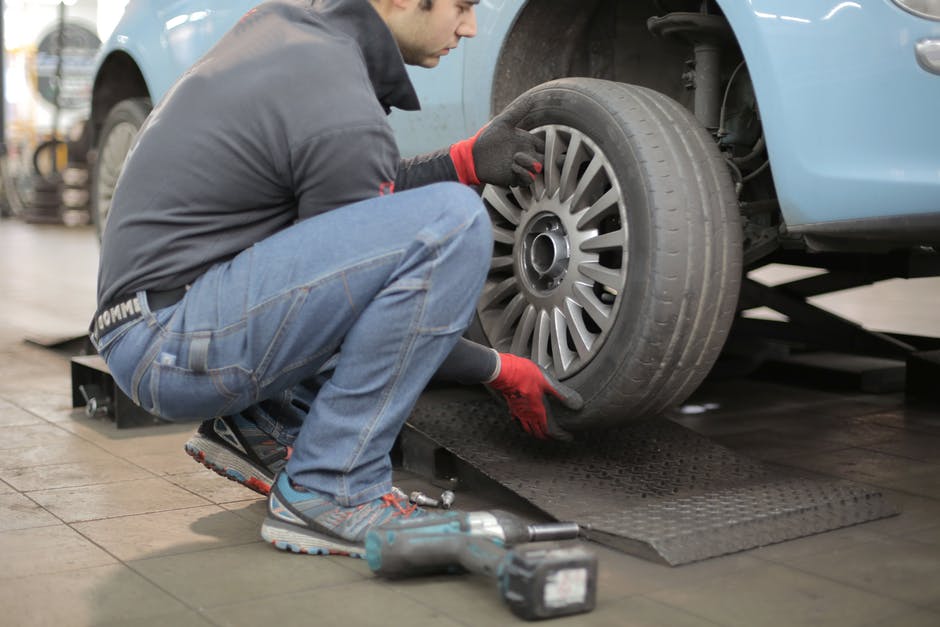When was the last time you inspected your tires?
Many of us take our tires for granted when driving, until we end up with a flat. However, tire maintenance is actually one of the most important safety measures a driver can take, as old or damaged tires greatly increase your risk of a collison.
Wondering how to know when you need new tires? Keep reading to find some of the most common signs that your tires are past their prime and need to be replaced.
Your Tires Are Bald
One of the strongest signs you need new tires is a lack of tread. If your tires have lost their tread and feel smooth to the touch, this means they’ve gone bald.
It’s very dangerous to drive on bald tires, as the car won’t have any traction. The grooves in tires make it easier for cars to handle tricky situations, like rain, wet roads, or snow.
If you try to drive without any tread on your tires, you’re more likely to hydroplane or get in an accident. Bald tires are also more likely to puncture, since they’re much thinner than they should be.
Prevent sudden blowouts or accidents by replacing your tires long before they go bald.
You’ve Failed the Penny Test
How to know if you need new tires? Many drivers swear by the penny test!
Take a penny and place it in between the grooves of your tire’s tread. If you can see all of Lincoln’s head on the coin, this means that the tread has worn too low and probably needs to be replaced.
If the grooves are deep enough to cover some of his head, then your car is fine to keep driving.
What tire tread depth is best? This will vary slightly, based on your vehicle and the type of tires you use, but once they’ve worn down to around 1/16 of an inch, they’re no longer safe to use.
Inspect your car and tires regularly, so you can notice when your tread is starting to wear down.
Constant Loss of Air Pressure
Most responsible drivers know that it’s important to check air pressure regularly. Most tires perform best at around 32-35 psi, which you can check at any gas station.
However, you may start to notice that your tires are losing air more frequently than they used to. This can indicate a problem with the tires, often due to the mounting seal or valve stem.
It can also be caused by worn-out tires, as thinner, older tires are more likely to lose air. If your tires aren’t holding air like they used to, your best bet is to visit a mechanic and find out what’s going on.
Uneven Wear Patterns
Sometimes, you’ll see that some of your tires have different wear patterns than others. If you notice that your tires are wearing unevenly, this could be caused by alignment issues or problems with uneven air pressure.
You might even feel this while you’re driving, as one side of the car might sit slightly higher than the other.
Many drivers rotate their tires around every 5,000 miles, as this can help them last longer and extend their life.
Your Car Has Been Skidding Often
Have you noticed that your car is having trouble braking correctly, especially on wet roads? If you’ve been noticing skidding or hydroplaning during rain or when driving at high speeds, this is a dangerous problem.
Or, if it seems to be taking longer to stop when braking, this can be due to poor tread.
Tread grooves allow water to flow under the tire, so once your grooves are gone, the water has nowhere to go and the car is more likely to skid or lose control.
This can be caused by low tread or bald tires, as they no longer have the traction to grip the road. If this happens, it’s best to find a local expert who can replace your tires, such as https://www.allcoasttyres.com.au/tyres/car-tyres/.
The Tires Are Bulging or Gouging
When inspecting your tires, check to see if there are any unexpected bumps or bulging, especially on the sidewalls. These issues can occur as tires age and are a clear sign that they’re no longer safe to drive on.
Look for cracks as well, as this means your tire is damaged.
Or, if your tires are newer, this could be a manufacturing error or defect, so call the mechanic who installed them to ask.
Vibrations
While some cars, particularly older ones, occasionally vibrate while you’re driving, this can also indicate a tire problem. Vibration can be caused by damaged tires or issues with air pressure or misalignment.
If your car doesn’t normally vibrate or shake, but has started doing so, then take it to the mechanic as soon as you can.
How to Know When You Need New Tires? Follow This Guide!
So, how to know when you need new tires? After reading the guide, we hope the answer is much clearer.
If you have any concerns about your tires, it’s best to visit a tire shop or mechanic right away. They can inspect your tires and let you know right away if they’re still ok to drive on.
Safety should always be your number one priority on the road, so don’t take the risk—always drive with safe tires to help avoid an accident.
Did you find this article helpful? If so, please keep reading to find more informative content.

